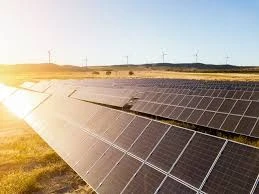72 cell solar panel wattage
Understanding 72-Cell Solar Panel Wattage A Comprehensive Guide
In recent years, solar energy has emerged as a leading alternative to conventional energy sources. Among the various types of solar panels available, the 72-cell solar panel has gained significant popularity due to its efficiency and wattage output. This article aims to explore the characteristics, advantages, and applications of 72-cell solar panels, specifically focusing on their wattage specifications.
What are 72-Cell Solar Panels?
Solar panels are composed of photovoltaic (PV) cells that convert sunlight into electricity. The 72-cell designation refers to the number of individual solar cells integrated into each panel. Typically, each solar cell within the panel generates around 0.5 to 0.6 volts. Thus, a 72-cell panel usually has an output voltage of about 36 to 40 volts, making them suitable for a variety of applications, including residential, commercial, and utility-scale projects.
Wattage Output of 72-Cell Solar Panels
The wattage output of a solar panel is a crucial factor for consumers to consider when investing in solar energy. A standard 72-cell solar panel usually produces between 300 to 450 watts, depending on its design, efficiency, and the specific technology employed. For instance, high-efficiency panels may reach outputs close to 400 watts, making them ideal for projects that require significant energy production in a limited space.
The wattage output is influenced by multiple factors, including
1. Cell Efficiency The efficiency of solar cells varies by manufacturer and technology. Monocrystalline panels typically offer higher efficiency rates than polycrystalline panels, resulting in a higher wattage output for the same physical size. 2. Temperature Coefficient Solar panels are affected by temperature. The temperature coefficient indicates how much the panel's output decreases as temperatures increase. A lower temperature coefficient means better performance in hot conditions.
3. Solar Irradiance The amount of sunlight hitting the panels significantly impacts their output. Panels perform best under optimal irradiance conditions.
4. Panel Configuration The arrangement of cells within the panel also plays a role. For instance, better quality materials and manufacturing techniques contribute to higher efficiency and, consequently, more wattage output.
Advantages of 72-Cell Solar Panels
72 cell solar panel wattage

1. Higher Power Output One of the primary advantages of 72-cell panels is their higher power output. This makes them a practical choice for large installations, where maximizing energy generation is vital.
2. Space-Efficiency With higher wattage outputs, fewer panels are required to achieve the same energy production, saving space on rooftops or solar farms.
3. Durability Many 72-cell panels are designed to withstand harsh weather conditions, ensuring longevity and reliability. This durability often translates to longer warranties, providing peace of mind for investors.
4. Scalability For commercial and utility-scale applications, 72-cell panels are easily scalable. They can be combined with other systems to optimize energy production, making them ideal for expanding projects.
Applications of 72-Cell Solar Panels
72-cell solar panels can be utilized in various applications
- Residential Installations Homeowners benefit from the increased wattage output, allowing them to produce more electricity to offset their energy bills effectively. - Commercial Projects Businesses can utilize 72-cell panels to cover larger energy needs, improving sustainability and reducing operational costs.
- Utility-Scale Solar Farms Due to their high energy production, these panels are ideal for solar farms, where land use efficiency is essential. Solar farms can significantly contribute to local and national energy grids, promoting renewable energy use.
Conclusion
In conclusion, 72-cell solar panels are an excellent choice for anyone seeking efficient and high-output solar energy solutions. Their wattage capabilities, coupled with the advantages of durability and scalability, make them particularly suitable for various applications, including residential and commercial projects. By investing in these panels, consumers not only harness the power of renewable energy but also contribute to a more sustainable future. As technology advances, we can expect even greater efficiencies and output from solar panels, cementing their role in the global shift toward clean energy.
-
Unlocking Energy Freedom with the Off Grid Solar InverterNewsJun.06,2025
-
Unlock More Solar Power with a High-Efficiency Bifacial Solar PanelNewsJun.06,2025
-
Power Your Future with High-Efficiency Monocrystalline Solar PanelsNewsJun.06,2025
-
Next-Gen Solar Power Starts with Micro Solar InvertersNewsJun.06,2025
-
Harnessing Peak Efficiency with the On Grid Solar InverterNewsJun.06,2025
-
Discover Unmatched Efficiency with the Latest String Solar InverterNewsJun.06,2025







